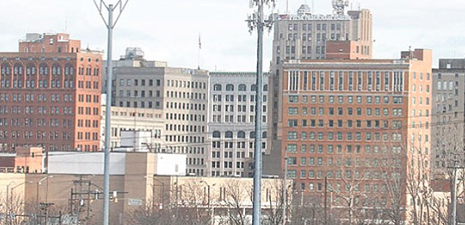Y’town’s grant application warrants federal approval

Related Stories
A “TIGER” rises prominently among the legacies of the two-term administration of President Barack Obama. No, we’re not talking about the largest predatory cat species, most recognizable for its pattern of dark vertical stripes on reddish-orange fur.
Rather, we’re referring to the multi-billion-dollar grant program of the U.S. Department of Transportation that evolved as part of the American Recovery and Reinvestment Act of 2009 that played a significant role in lifting this nation out of the Great Recession through massive infrastructure improvements.
The success of TIGER, officially known as the Transportation Infrastructure Generating Economic Recovery grant program, has led to its growth into one of the most sought-after initiatives within the U.S. Department of Transportation.
The 2017 TIGER program was unveiled two months ago by U.S. Secretary of Transportation Elaine L. Chao.
In 2016, TIGER awarded 40 U.S. communities out of 585 applicants about $484 million to fund infrastructure projects designed to enhance safety, strengthen regional identities, stimulate economic development and improve environmental quality.
This year, a new and improved proposal from Youngstown deserves a slice of the TIGER pie.
Specifically, the grant proposal closely mirrors one submitted by the city of Youngstown and numerous partners last year. Though it did not make the final cut, it was “rated highly” by DOT officials. This year, the proposal’s lead agency is the Eastgate Regional Council of Governments, which strengthens the regionwide flavor and impact of the proposal.
That $10.2 million proposal called the Youngstown SMAR2T Network is ambitious but realistic. The 29-page grant application summarizes the project thusly: “In the core of the Mahoning Valley, the Youngstown SMAR2T Network will connect Strategic, Medical, Manufacturing, Academic, Residential, Recreational, Technology, and Employment centers in our regional heart and downtown Youngstown, positively transforming our region, communities, people, and lives.”
In short, the funding – coupled with a $10.2 million match in local dollars and in-kind contributions by stakeholders – would finance infrastructure, safety and aesthetic improvements to the central city’s greatest assets. These encompass:
The medical and health assets of the expansive campus of St. Elizabeth Youngstown Hospital.
The higher educational assets of Youngstown State University and Eastern Gateway Community College.
Technological assets of the sprawling campus of the Youngstown Business Incubator and America Makes.
The recreational and entertainment assets of the growing entertainment, restaurant and nightclub scene in the heart of downtown and the region’s mammoth natural gem in Mill Creek.
Individually, each has played a successful role in the ongoing renewal and reinvention of the extended downtown area of the city as the hub of the |Mahoning Valley. Collectively, they bring greater pride, power and prestige to our region’s identity.
Infrastructure improvements
If the grant is approved early next year, the partners will make numerous infrastructure improvements, including general cleanup, lane closures to traffic, construction of hiking/biking trails and enhancements to mass-transit services. This year’s proposal also adds bike lanes along Fifth Avenue reaching Mill Creek Park and along Rayen Avenue to the sprawling new East Side chill-can campus.
The SMAR2T Network also will help resolve a federal mandate with which the city must comply. It will address a key element of the U.S. Environmental Protection Agency’s consent decree upon Youngstown by adding 22,000 cubic feet of rainwater storage to the city’s stormwater capacity .
The federal reviewers of the application also should look favorably upon the robust local commitment behind the project. The grant application is supported by matching funds $2.3 million in cash and $7.9 million in-kind support – from Eastgate, the city, YSU, EGCC, Mercy Health, Mill Creek MetroParks and the Western Reserve Transit Authority, among others.
 43
43
